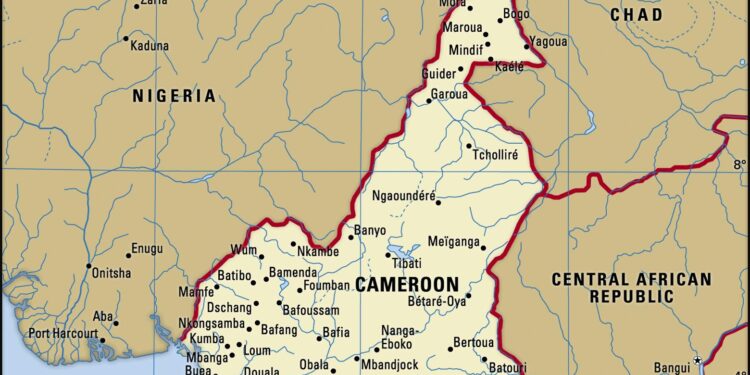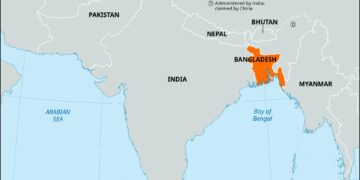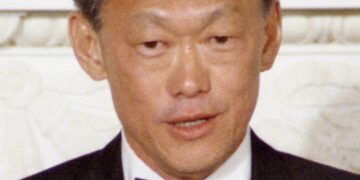Cameroon’s Overlooked Humanitarian Crisis: Nearly One Million Displaced Amid Escalating Conflict
In the shadow of global crises that dominate international headlines, Cameroon’s severe humanitarian emergency remains largely ignored. Years of intensifying violence in the country’s Anglophone regions have uprooted close to one million individuals, forcing families into precarious living conditions. This turmoil stems from a complex web of political, ethnic, and economic tensions that continue to destabilize communities. As these displaced populations grapple with critical shortages in food, shelter, and healthcare access, their plight demands urgent global awareness and intervention. This article explores the root causes behind Cameroon’s displacement crisis, its profound effects on both displaced persons and host communities, and highlights essential strategies for international cooperation aimed at fostering recovery and resilience.
Understanding Cameroon’s Displacement Crisis: Effects on Communities and Infrastructure
The scale of displacement within Cameroon has reached unprecedented levels due to ongoing armed conflicts primarily concentrated in the Northwest and Southwest regions. The influx of nearly one million internally displaced persons (IDPs) has not only disrupted individual lives but also placed immense pressure on local infrastructures where many seek refuge.
Host communities—often already grappling with poverty—face significant challenges as they attempt to accommodate large numbers of newcomers. The sudden population surge intensifies competition over scarce resources such as potable water, nutritious food supplies, adequate housing units, and medical services.
- Resource Scarcity: The arrival of IDPs exacerbates shortages in essentials like clean water and food staples leading to increased tensions between residents.
- Overburdened Public Services: Clinics become overcrowded while schools struggle with capacity issues affecting quality education delivery.
- Tensions Affecting Social Unity: Integrating displaced groups sometimes triggers social friction that undermines community cohesion.
| Sector Affected | Description |
|---|---|
| Healthcare Systems | The surge in patient numbers strains limited medical supplies resulting in inadequate treatment availability across affected zones. |
| Education Facilities | Crowded classrooms hinder effective learning environments for both local children and displaced youth alike. |
| Shelter & Housing | A critical shortage of safe accommodations worsens living standards among IDPs residing within informal settlements or overcrowded homes. |
Decoding the Origins: Socio-Political Drivers Behind Cameroon’s Conflict & Global Response Imperatives
The roots fueling Cameroon’s crisis are deeply embedded within decades-long grievances involving ethnic discord alongside political marginalization predominantly affecting English-speaking minorities. These factors intertwine with economic disparities aggravated by environmental stressors such as climate change-induced resource depletion—further igniting unrest across vulnerable populations.
- Evolving Ethnic Tensions: Historical rivalries between diverse ethnic groups have escalated into violent confrontations impacting civilian safety nationwide.
- Lack of Political Accountability: Government repression coupled with limited avenues for peaceful dissent fosters widespread disenfranchisement among marginalized communities.
- Inequitable Economic Conditions:Pervasive poverty combined with unequal distribution of wealth fuels frustration contributing to instability.
- The Role of Environmental Challenges:Droughts and deforestation reduce arable land availability worsening competition over natural resources vital for livelihoods.
Tackling this multifaceted crisis necessitates robust international collaboration focused on inclusive governance reforms alongside targeted humanitarian assistance programs designed to protect human rights while promoting sustainable development initiatives.Global advocacy efforts must emphasize peace negotiations aimed at reconciliation between conflicting factions;, support educational outreach reducing prejudices; expand humanitarian aid addressing immediate survival needs; all underpinned by investments empowering grassroots organizations working directly within affected areas..
| Strategic Focus Area | Anticipated Impact |
|---|---|
| Mediating Peace Dialogues | Facilitates conflict resolution fostering long-term stability |
| Investing In Education Programs | Promotes mutual understanding reducing intergroup hostility |
| Scaling Up Humanitarian Relief Efforts | Meets urgent needs improving survival chances among displaced populations |




![[Expired] [Award Alert] U.S. Cities to São Paulo, Brazil From 50K Miles in Business Class – Upgraded Points](https://capital-cities.info/wp-content/uploads/2025/07/149760-expired-award-alert-us-cities-to-sao-paulo-brazil-from-50k-miles-in-business-class-upgraded-points-360x180.jpg)





![[Expired] [Award Alert] U.S. Cities to São Paulo, Brazil From 50K Miles in Business Class – Upgraded Points](https://capital-cities.info/wp-content/uploads/2025/07/149760-expired-award-alert-us-cities-to-sao-paulo-brazil-from-50k-miles-in-business-class-upgraded-points-120x86.jpg)




Upcoming Polls Set to Be Bangladesh’s Most Credible Ever, Says Yunus’ Aide Shafiqul Alam